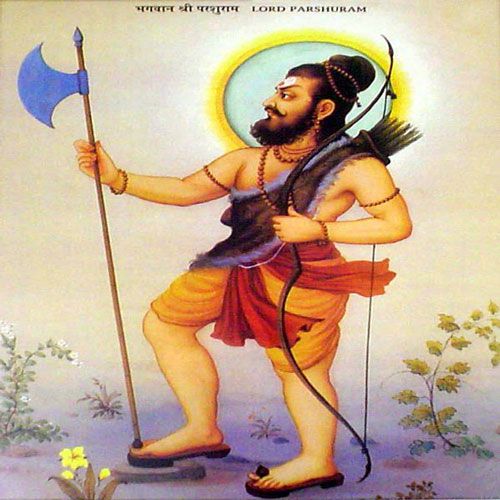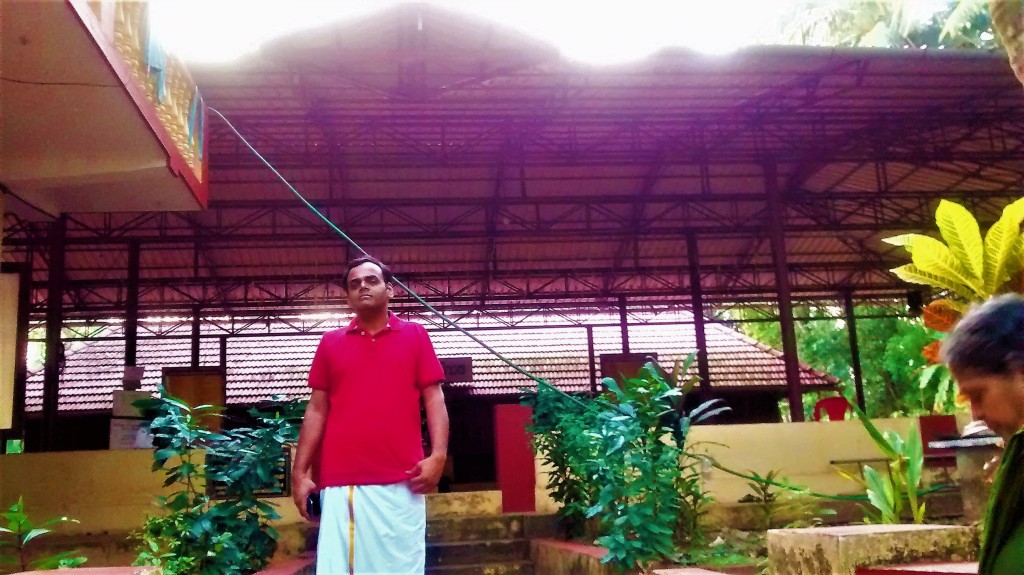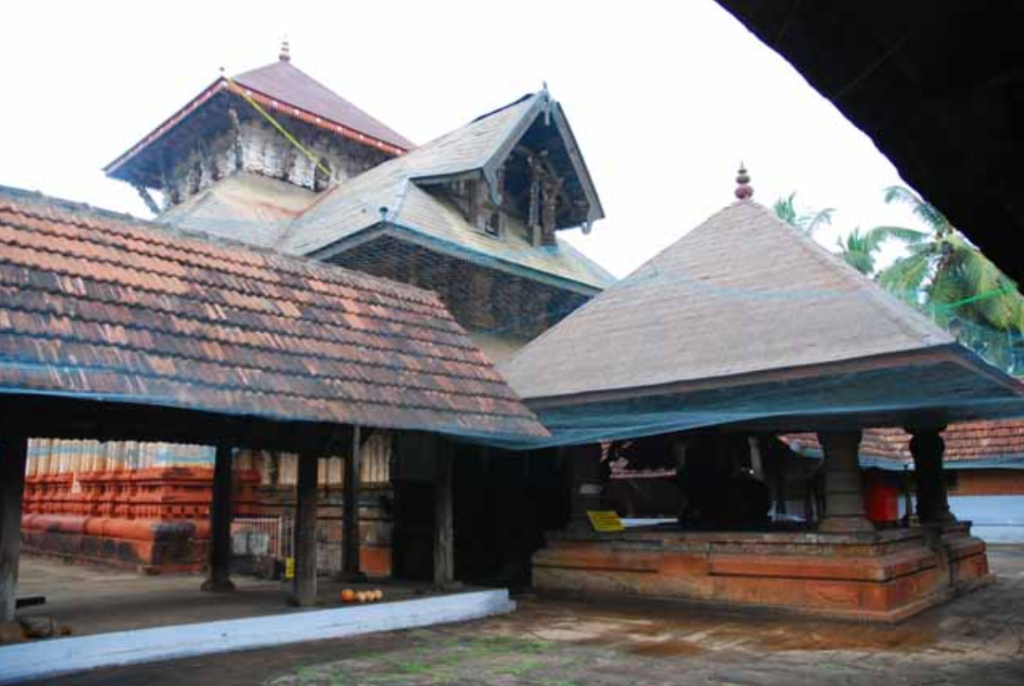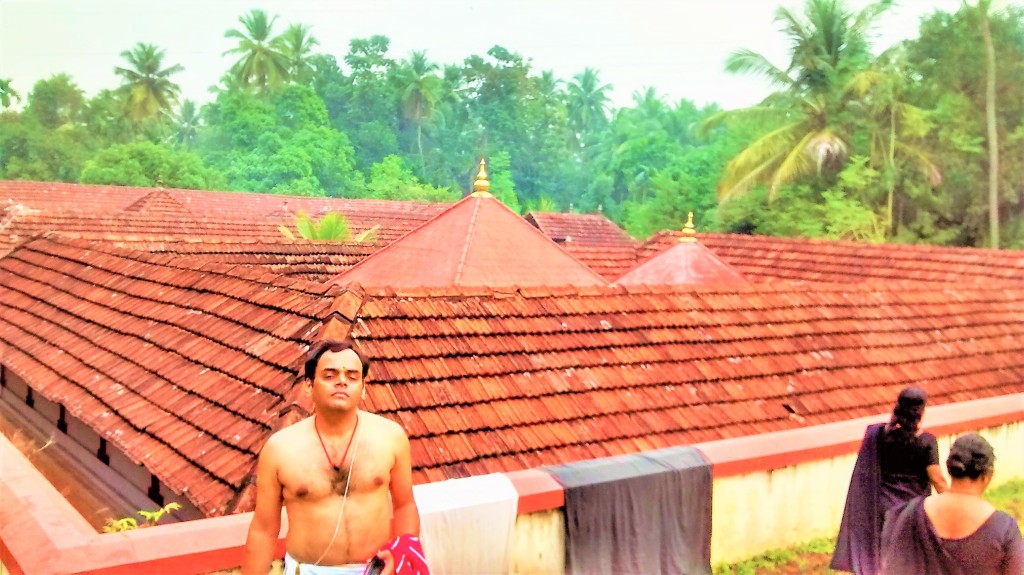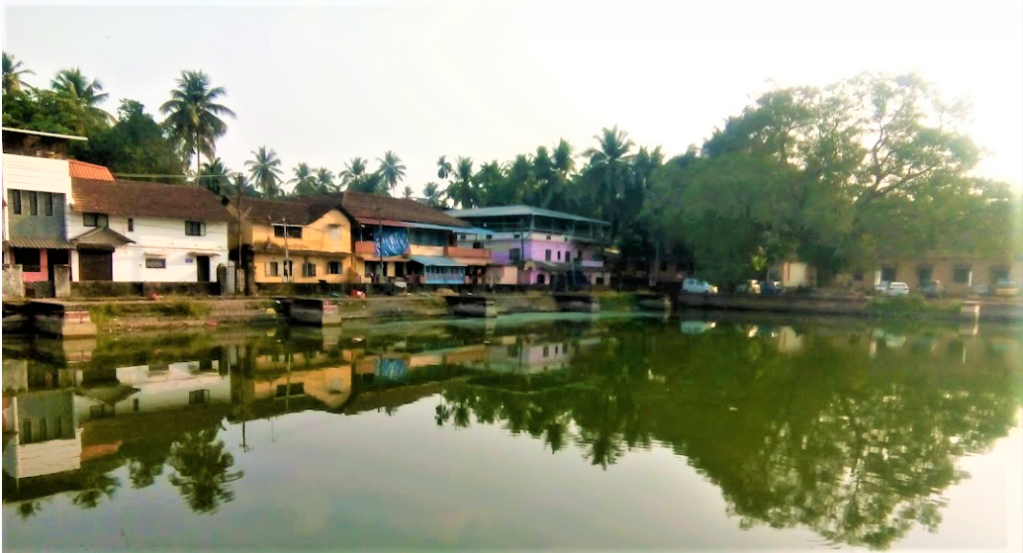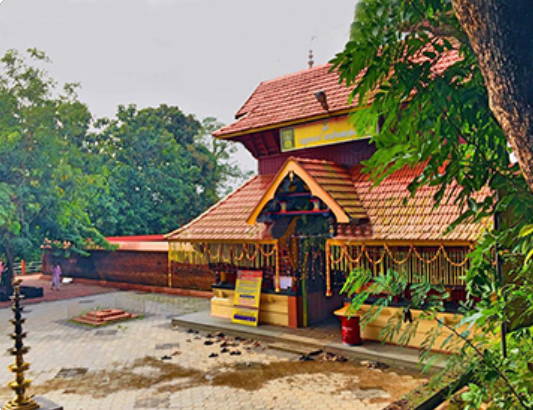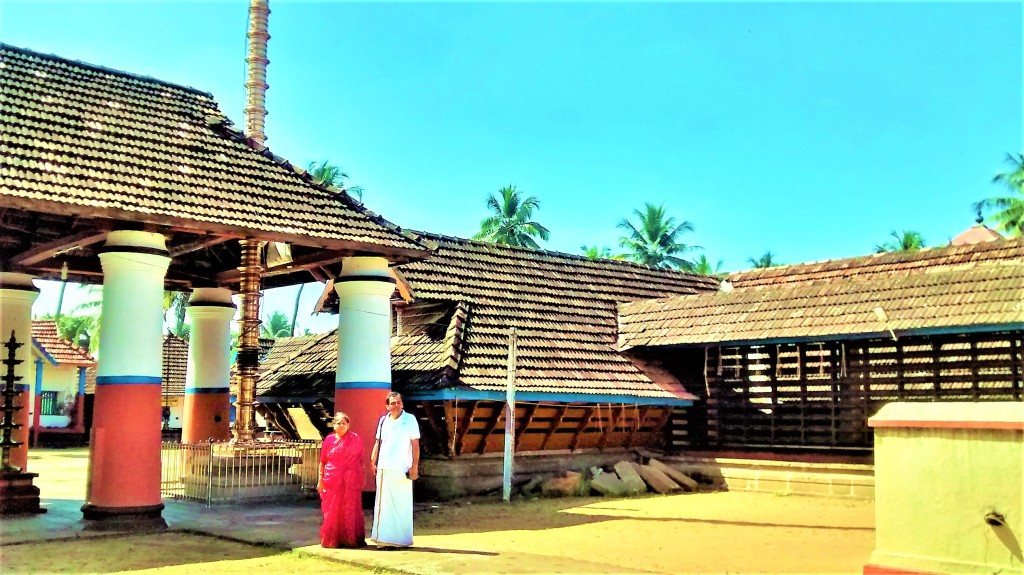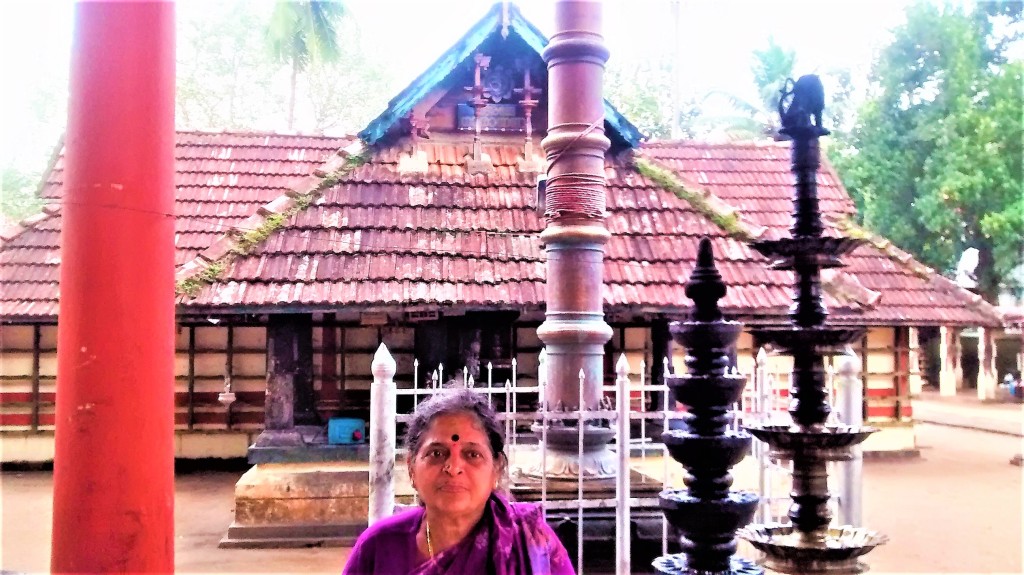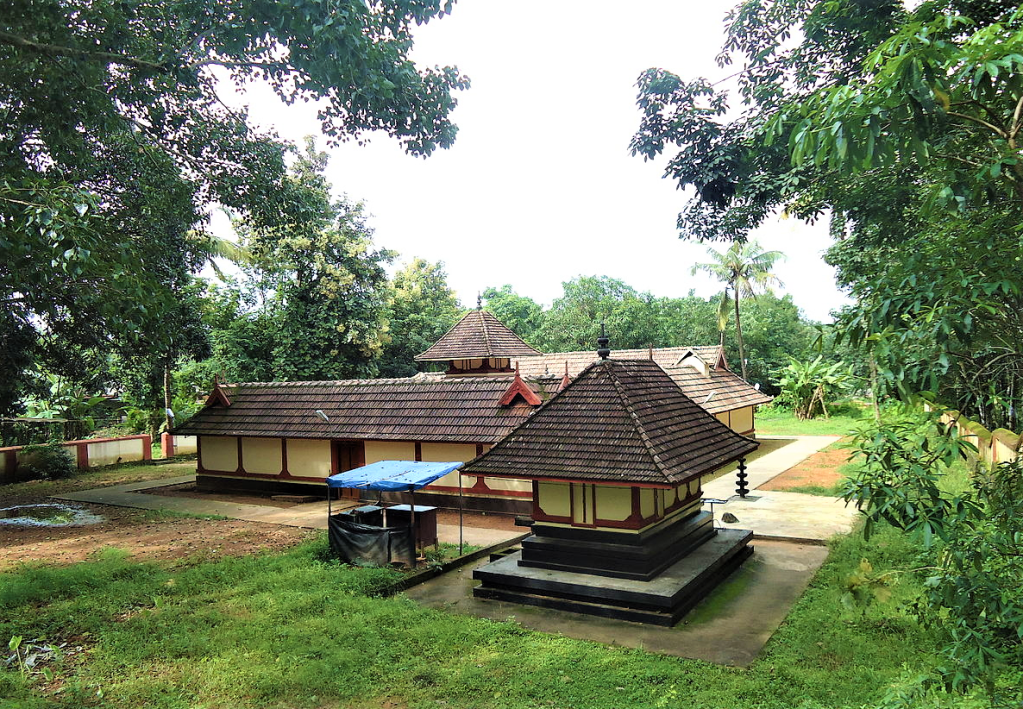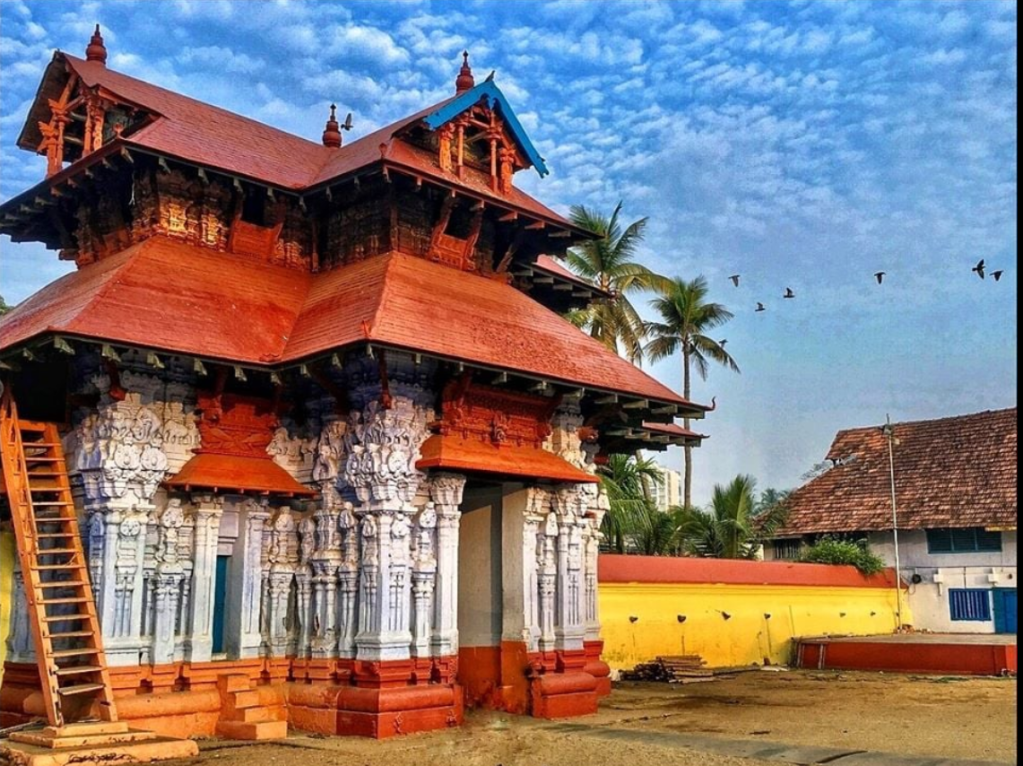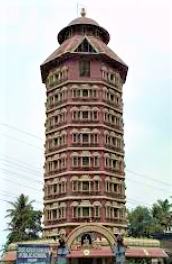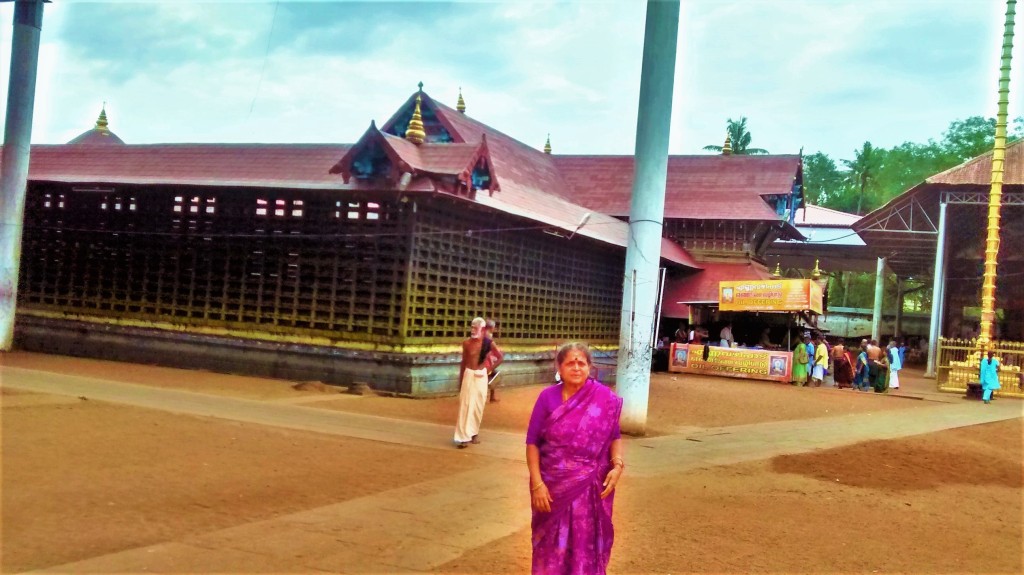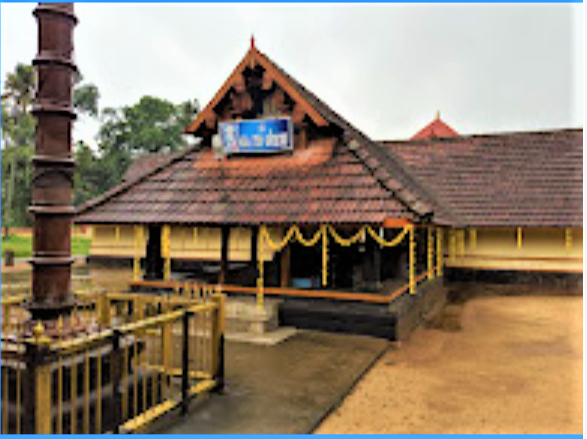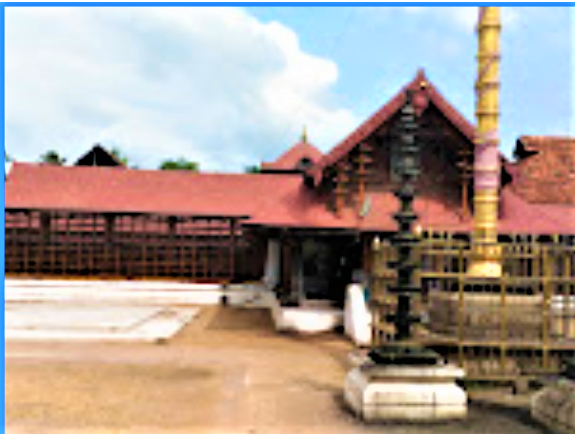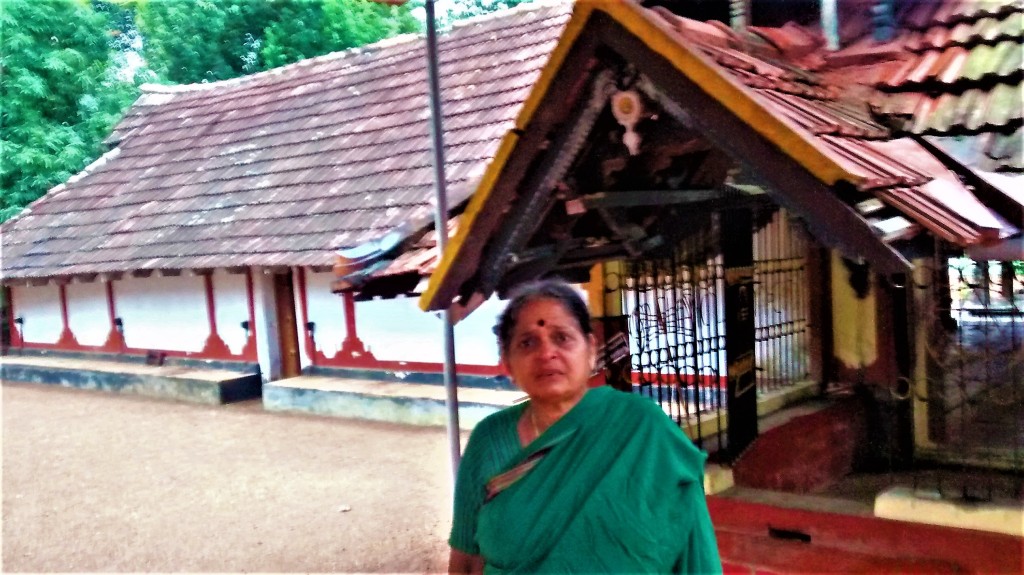Index of Contents
- Introduction
- Parasurama Shiva temples
- Google Map of Parasurama Kshetrams
- Mahadeva Temple, Ashtamichira, PRST95
- Chirackal Mahadevar Temple, PRST 20
- Uliyannoor Sree Mahadeva Temple, PRST 17
- Aluva Mahadeva Temple, Manappuram, PRST 14
- Pazhoor Perum Thrikovil, PRST 11
- Perumthatt Sree Mahadeva Temple, PRST 32
- Chakkamkullangara Shiva Temple, PRST15
- Sree Mahadeva Temple Pattanakkad, PRST 3
- Velorvattom Sri Mahadeva Temple , PRST1
- Vaikom Sree Mahadeva Temple, PRST 13
- Ernakulam Shiva Temple, PRST10
- Sri Siva Subrahmanya Swayambhoo Temple, PRST 12
- Tirunettur Mahadeva Temple, PRST 12
- Thiruvalloor Mahadeva Temple, PRST 19
- Kunnathu Thali Mahadeva Temple,PRST 18
- Kodungallur Sree Kurumbha Bhagavathy Devi Temple, PRST 92
- Cheranalloor Sri Mahadeva Temple, PRST16
- Thrikkariyoor Mahadeva Temple, PRST9
- Thaliyil Mahadeva Temple, Thazhathangady, Kottayam, PRST35
- Thirunakkara Mahadeva Temple, PRST 37
- Parippu Mahadeva Temple PRST33
- Ettumanoor Sree Mahadeva Temple, PRST34
- Kaduthuruthy Thaliyil Temple, PRST36
- Kundannoor Sree Mahadeva Temple
- Thuravoor Mahakshethram Narasimha Temple
Note : Since the Blog is lengthy, If you Click on any Title, you will be taken to the concerned paragragh by the link provided. Also you can return to the Index of Contents for which links have been provided at several places in the Blog.
1.Introduction
This blog gives details of Parasurama Shiva temples (PRST) around Ernakulam. Please also see my earlier blog some Temples in Ernakulam area were covered.: Kerala Temples IV Part 5 of 5 Kozhikode, Ernakulam, Kottayam, Pathanamthitta and Idukki district temples. Also see my Blog : 50 Famous temples around Ernakulam – Bhagavathy Temples – Part 2 of 2 and have darshan of both Parasurama Shiva and Bhagavathy temples around Ernakulam.
I stayed for 3 days in Sapphire Club Metro Hotel, Ernakulam and one day at SPOT ON 45361 Ar Square, MALA, Valiyaparambu; Still I could not have darshan of all the Parasurama Shiva Temples around Ernakulam.
2. Parasurama Shiva temples

As per the legend, Lord Parasurama created the land between Gokarna and Kanyakumari. Lord Parasurama the sixth incarnation of Lord Vishnu was the son of Sage Jamadagni and Renuka. As a mark of repentance for Kshatriya Nigraha sin, Parasurama meditated at Gokarna and invoked Lord Varuna (the Lord of the Oceans). Parasurama asked him for a boon. To absolve himself of the sins he had committed, he wanted to donate some land to the Brahmins. There was no land available because he already donated the whole land he obtained by the 21 round Kshatriya Nigraha to Sage Kashyapa. Lord Varuna told Parasurama that he would give him as much land as he wished. He told him to fling his Parasu (axe) from where he stood at Gokarna. The land from Gokarna till the point where the axe landed would be given to him was the boon that Lord Varuna promised him. The throw of the `axe’ from Gokarna to Kanyakumari created Kerala. Parasurama donated this land to the Brahmins and settled Brahmins there in 64 gramams or villages. After the creation of these gramams, Parasurama had consecrated 108 Shiva temples and 108 Durga temples for the well-being and prosperity of the people in Kerala . Please see my blog on Parashurama Kshetrams – Unexplored Gems of Temples in India for more details. Details of some more Parashurama established Shiva and Bhagavathy temples are given in my blogs: Details of some more of the Parashurama Shiva and Bhagavathy Temples are given in My Blogs: Kerala Temples II , Kerala Temples III – part1 of 2
3. Google Map of Parasurama Kshetrams
The locations of Parasurama prathishta temples are embedded in the Interactive Google Map below. By clicking any pointer in the map, one can see photographs , weblinks for details and you tube links for video of the temple. You may click on the google map to expand the view and look at your temple of interest
4. Mahadeva Temple, Ashtamichira, PRST95
Mahadeva Temple, SH51, Ashtamichira, Kerala 680731 PRST95 Mahadeva Temple located at Ashtamichira, Kerala at a distance of 34 kms from Thrissur and 9 kms from Chalukudy is a Parashurama Siva Temple PRST 95 . Sri Parashurama is the sixth Avatar of Lord Vishnu and He established 108 Shiva Temples, 108 Bhagavathy temples and 108 Dharma Sastha temples in Kerala.

A very humble temple to see, its true feel is however punctured here and there in the form of big arch and contemporary flooring. But the vast water body (chira) just behind the temple gives it a very auspicious feel.
Inside the chuttambalam there are two deities of Lord Shiva – one is swayambhu (self manifested) in the form of Mrityunjayamoorthy called Thekkum Thevar and the other is Parvathi sametha Siva called the Naduvil Thevar. The Naduvil Thevar should be the one consecrated by Lord Parasurama. Ganapathi, Sastha and Bhadrakali are also worshiped inside the chuttambalam. The structure of the temple is a little different from others. The temple has two entrances to the chuttambalam. One sacrificial stone (Ballikallu) is placed outside the chuttambalam and another one is inside – in front of the Swayambhoo Siva. Outside, there is yet another sub-shrine of Lord Shiva in the form of Kirathamoorthy, called Vadakkum Thevar. There are sub shrines for Nagas and Lord Krishna as well.

The main sanctum of Naduvil Thevar is two storied square structure – a simple design but with very old charm. The sanctum of Swayambhoo Lord Shiva is a circular structure (Vatta-sreekovil), but the railings and new paint gives it a modern impression. Lord Shiva here is facing East. The well inside has a very old feel. The modern granite floor of namaskara mandapam and tile flooring in few places is unfortunately compromising this temple’s modest appearance. This temple is managed by Cochin Devaswam Board.
The name Ashtamichira might have originated from the ‘Ashtamoorthy Chira’, Lord Shiva is known as Ashtamoorthy for he has eight forms. The temple also has eight deities which too could be the reason for this place name.

As per Achyuthan Maash (Master), about 25 years back an Astamangalya Prasna was performed in this temple and it was decided to perform Astabandhakalasa of Swayambhoo Siva. The date and time was decided and all arrangements were on. It was during summer and the water body (chira) behind the temple was completely dry at that time. It was so dry that the bottom of water body was visible till the previous day of Astabandhakalasa. On the day of Astabandhakalasa, in the morning, when people came to temple, they found this water body is brimming with water. Yes. People can view it in a scientific or mystic way, but this is something which happened here.” Contact for Darshan : Santosh Nambudri 9645850569. To return to Index of Contents, Click Here. Otherwise continue
5. Chirackal Mahadevar Temple, PRST 20
Chirackal Mahadevar Temple, 6923+CH4, Kerala 683572 PRST 20 Chirackal Mahadevar Temple located at Puliyanam, Ernakulam district Kerala at a distance of 40 kms from Kochi and 7 kms from Angamaly is a Parashurama Siva Temple PRST20 . Sri Parashurama is the sixth Avatar of Lord Vishnu and He established 108 Shiva Temples, 108 Bhagavathy temples and 108 Dharma Sastha temples in Kerala

The presiding deity of this temple is Lord Shiva. The temple has a well crafted tower with no dwajastambam. It also houses a Balikkal (sacrificial stone). The prayer hall (Mulambambalam) is lies to the east of the temple. The presiding deity of this temple is Lord Shiva who graces from the main Sanctum in the Linga form facing the direction east. Sreekovil is small but beautiful. It is two storeyed. Here, also Siva is in Rowdra bhavam and is confronted with the water, so the deity is defenseless.

When the Alangadu Dynasty split into two, Kothakulangara which was to the north of Angamali was decided as the capital. In 1762, the rule of Zamorin was overpowered by the Travancore rulers. As a result, Cochin and Alagangal were merged with the Travancore kingdom. Later when the kingdom of Travancore was dissolved, the Chirackal temple administration came under the Travancore Devaswom Board.

Devotees believe that by visiting this temple will get cure of their diseases and to get better marital relations
6. Uliyannoor Sree Mahadeva Temple, PRST 17
Uliyannoor Sree Mahadeva Temple, Temple Rd, Uliyannoor, Aluva, Kerala 683108 PRST 17 Uliyannoor Sree Mahadeva Temple is located at Uliyannoor, Aluva, Kerala on the banks of the Periyar River. at a distance of 12 kms from Cochin International Airport and 58 kms from thrissur. It is a Parashurama Siva Temple PRST17 . Sri Parashurama is the sixth Avatar of Lord Vishnu and He established 108 Shiva Temples, 108 Bhagavathy temples and 108 Dharma Sastha temples in Kerala.

Sreekovil is very big (One of the biggest in Kerala). The Sivalingam is also very big. Darshan is towards east. On the back side, Parvathy is there giving darshan. The Vigraham is very beautiful to see. Here, Madathilappan temple & Swayamboo Ganapathy is also there.
Uliyannoor Mahadeva Temple is an architectural beauty believed to have been built by the legendary traditional architect Perunthachan. The Vatta (circular shaped) sreekovil (sanctum sanctorum) of the temple, with its 68 wooden beams that converge under a single dome above the sanctum, is truly a wonder signifing 64 art forms and 4 Vedas.
It is located about twenty meters from the ancient temple founded by Parashurama in 525 BC. The deity of Shiva faces east and the Periyar River. Garbhagriha temple has a circumference of 42 m, decorated with the goodness and talent of Perunthachan architecture. . The temple has a wide namaskaramandapa. A large statue of Nandi looks to the west. The deity of Sree Parvathy also faces the west.
Annapoorneshwary is the secondary deity here. South of this temple is the 12-foot Sri Madathillappan Temple. This temple has a deity of Swayambhu Ganapathi at its entrance to the south. All these temples make up the temple complex of Uliyannoor Mahadeva.

The Uliyannoor Temple was built in strict respect of the traditional heritage. Garbhagriha of this temple has a circumference of 42 meters adorned with the goodness of Perunthachan architecture. The main deity is Lord Shiva. But Parvathy devi is also worshiped here.
Lord Shiva and Parvathi Devi are worshipped simultaneously. ’Dampathi-Darshanam’ is considered to be more effective. Temple timings are : Morning: 5 AM to 10 AM and 5 PM to 7:30 PM
7.Aluva Mahadeva Temple, Manappuram, PRST 14
Aluva Mahadeva Temple, Manappuram, Temple Rd, Thottakkattukara, Aluva, Kerala 683108 PRST 14 Aluva Mahadeva Temple is located at Manappuram, Aluva, Kerala on the bank of the Periyar River at a distance of 10 kms from Cochin International Airport,21 Kms from Ernakulam and 56 Kms from Thrissur. It is a Parashurama Siva Temple PRST14 . Sri Parashurama is the sixth Avatar of Lord Vishnu and He established 108 Shiva Temples, 108 Bhagavathy temples and 108 Dharma Sastha temples in Kerala.

The Mahadeva Temple is situated at a distance of 1Km from the Marthanda Varma bridge in NH-47. Periyar river splits into two near Aluva railway bridge and after the splitting one part is called Mangalappuzha. Aluva Mahadeva Temple is located on the sand bank in between the Mangalppuzha and Periyar river. Aluva Mahadeva Temple is managed by Travancore Devaswom Board.
The unique feature of Aluva Mahadeva Temple is that the Shivalinga is not enshrined in a Sreekovil. The Swayambhoo Shivalinga installed by Lord Parasurama and worshipped by Lord Sree Rama rises out of the sand banks of the Periyar river. This place is called the Aluva Manal Puram (land with sand).

There are many legends associated with this temple. After installing the Lingam Parasurama built a temple here but was destroyed by flood. Lord Shiva told him that no temple structure will exist at that place because He does not want a temple structure for protecting the Lingam.
As per another legend, The Bhuthaganas of Lord Shiva worshipped the Lingam every night. They decided to construct a temple there. But Lord Shiva told them that they must complete the temple in a single night. Bhuthaganas agreed and started the construction. When the foundation was completed, Lord Vishnu came there, disguised as a cock and crowed to mislead the Bhuthaganas. The Bhuthaganas, fearing that dawn had approached, left the work unfinished.
Lord Sri Rama, during his search for Seetha, performed tharpana for Jadayu here. Another legend is associated with Vilwamangalam Swamiyar. One day he visited this place and realized the presence of Lord Shiva and identified the Shiva Linga installed by Parasurama. He started worshiping the Linga and Lord Mahadeva appeared in front of him and told him to start poojas there. Pottayil Ilayathu, Thottathil Nambiar and Idamana Nampoothiri made proper arrangements for Shiva Pooja and Vilwamngalam started the pooja. But there were no vessels to offer Nivedyam. So Vilwamangalam used a Kavungin Pala (aracanut leaf) to offer Nivedyam. Even today the nivedyam is offered in Kavungin Pala and is called Palanivedyam. Later Vilwamangalam and his associates – Ilayathu, Nambiar and Nampoothiri – constructed a temple but it was destroyed by flood in AD 1343.
During the monsoon season the whole region gets flooded and the Shivalinga gets submerged in water. So the Ooranma Nampoothiris decided to construct a small temple on the bank of the river inorder to perform poojas during monsoon season. This temple is called Bala Kshetram. It is a fact that though unfinished in nature, this temple has withstood many a flood and still stands as an enigma to the architects, regarding its foundation and structure. The Travancore Devaswom Board authorities constructed a temple structure here some years ago. but the Deva Prasna conducted later revealed that constructon of the temple structure is against Lord Shiva’s wish.
The Shiva Linga faces east. There is a Nandi prathishta in front of the temple.From Makaram 1 to Medam 1 only . Athazha pooja is performed and on other days only nivedyam is offered. Shivarathry in Kumbham, Utsavam in Meenam, Vavu Bali in Tulam and Karkkidakam are the festivals. Dhara and Rudrabhishekham are the main offerings.
The most important festival of Aluva temple is the Maha Shivarathry in Kumbham (February-March). There is no other place in Kerala where Shivarathry is celebrated on such a grand scale as in Aluva. The Shivarathry festival is a colourful celebration and devotees stay away the whole night in prayer and pay homage to their ancestors. The celebration of Shivarathry in Aluva is as famous as the festivals like Ashtami at Vaikom, Pooram at Thrissur etc.

The sand bank is extensive and the pilgrims running into several thousands congregate here. People belonging to all classes, castes and creeds assemble for this festival, some for worship, some for merchandise and some for sight-seeing. There are rows of sheds built where merchants exhibit every kind of merchandise for sale. On the night of Shivarathri pilgrims keep awake and recite the puranas. There are shows, dances etc. meant for keeping the pilgrims awake throughout the night. In addition to the observance of Shivarthri rites, most of the pilgrims offer Bali (sacrifice) to their ancestors in the morning succeeding the holy night. A dip in this river at the Brahma muhurtha after observing the rituals of Shivarathri is considered very sacred. A fair is also organised for a month from the Shivarathri day. Daily Ezhunnallippu of the deity atop a caparisoned elephant, a procession known as Dikvijayam is conducted on the third and fourth days, and pallivetta ceremony on the fifth day. The festival concludes with the Aarattu on the next day of Shivarathri.
There is an Ayyappa temple near the Temple. The Aluva Sree Krishna – Balarama temple, Aluva Adwaitha Ashramam and Aluva palace are situated on the opposite bank of Mahadeva temple. Kadungalloor Sri Narasimha Temple and Sri Thiruvaloor Mahadeva Temple Alangad also situated near Alwaye Shiva Temple. Temple timings are : 6 am to 12 pm and 5 pm to 8pm; Contact Phone:0484-2603045
8. Pazhoor Perum Thrikovil, PRST 11
Pazhoor Perum Thrikovil, Ernakulam, Kerala 686664 PRST 11. Parivaloor Siva Temple (Pazhoor Perum Thrikovil) is located in the town of Piravom, Kerala, alongside the Muvattupuzha River at a distance of 28 Kms from Ernakulam. It is a Parashurama Siva Temple PRST11 . Sri Parashurama is the sixth Avatar of Lord Vishnu and He established 108 Shiva Temples, 108 Bhagavathy temples and 108 Dharma Sastha temples in Kerala. “Paarivaloor Adattum nal Parippil Chathamangalam” – from 108 Shivalaya Nama Stothra. Paarivaloor – it is believed this place of bygone era has now transformed into the present day village of Pazhoor near Piravom.

See below my You tube video which gives a lot of information about this temple.
A unique phenomenon observed here is that the Muvattupuzha river flowing west from east changes direction on reaching the temple. It retraces its path and flows east for a certain distance before diverting again to north and west. Had the river not changed its course, the temple would have been washed away. Pazhoor Padippura, is an astrology center linked to Pazhoor Perumthrikkovil temple.

As per the legend, once a Namboothiri came to the astrologer of Pazhoor Padipura to check his horoscope. Astrologer found the warning of immediate death in that horoscope. Instead of disclosing it, he advised the Namboothiri to come back the next day. Namboothiri unaware of his predicament went to Lord Siva temple across the lake and spent that night there. At that time the temple was in a dilapidated state. The Namboothiri while sleeping decided in his mind that the temple should be renovated.

The next day Namboothiri went back to the astrologer. The astrologer was surprised to see the Namboothiri back who he thought would have died by then. On understanding the stay of the Namboothiri in Siva temple and his subsequent decision to renovate the temple the astrologer said: “You would have died yesterday as per your horoscope. But Lord Siva has blessed you as you have embarked on a great divine activity. There is no need to check your horoscope. You will live till the temple is renovated and further on till the Sathaabhishega is done!” – Lord Siva who blessed that Namboothiri is still blessing the devotees at Pazhoor Perum Thrikovil as Perum Thrikovilappan.

As per another legend, long ago the area was home for many Brahmin families. The children belonging to these Brahmin families had a very strict teacher. The kids believed that the teacher was being too harsh on them because he had no child. So the kids made an idol out of sand and ‘payal’ (weed) and prayed to God for blessing their teacher with a kid. Pleased by their devotion, the god granted their wish. The idol made out of ‘paayal’ won the place name ‘Payaloor’, which later became ‘Pazhoor’.

The antique feel is visible all over the temple and its construction is similar to that of Vaikkom Mahadeva Temple. Though the temple is much smaller in size, the richness of mural paintings, intricate wooden and stone carvings are breathtaking. The flag mast (kodimaram) and its related structures are the only things which we felt are relatively new. The famed craftsman Raman Perumthachan is believed to have done many of the carvings in this temple. As we enter the Valiyabalikalpura, we see a wooden garuda on the top right with a broken wing. The myth says, while the Thachan was painting the eyes of garuda, it came alive due to the perfect craftsmanship and tried to fly away. Thachan promptly cut-off its wing and it still remains in that state even today. The roof of Balikalpura has intricate wooden carvings. We are told it depicts the story of Ramayana.
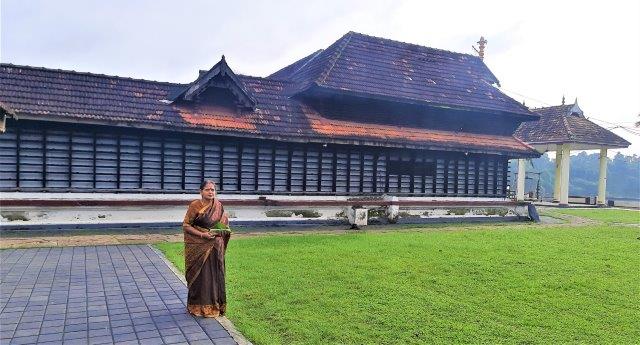
The sanctum is vatta-sreekovil (round in shape), thatched with copper plates, with mural paintings, carved wooden beams and intricate stone designs around. Even though this is a protected monument of Department of Archaeology, the art forms are unfortunately in a highly neglected state. The paintings have almost faded away. The wooden carvings have lost many of its features. Still the richness of these art forms leaves us in a state of awe. One specific wooden carving to be noted is that of Sage Astavakra on the left side of the sanctum. It is said to be anatomically perfect in its measures which points out to the possibility of Perumthachan being the person behind it.
Lord Siva here is facing East. It is said that this Siva Linga, consecrated by Lord Parasurama, was originally made by Parvathi Devi out of sand and weeds from the river. Because of this reason, the daily dhara (water bath) of the Lord is done using the conch. The deity is in the sankalpa as Lord doing penance after Sati viyoga (Similar form as in Sringapuram Siva Temple). The dwarapalakas of the sanctum are also noteworthy with their grand dimensions. Lord Ganapathi is consecrated on the left side of sanctum. There are 5 daily poojas and 3 seevelis in this temple. Festival is in the Malayalam month of Kumbha.
In the outer prakara (compound), there are deities of Lord Krishna, Sastha and Nagas. There is an old jack fruit tree near the Nagas. We are greeted with one more fable about this tree. One day the golden pot which is used to bring water for the Lord slipped down into the river. The person also went in search of it and reached the Patala world. There he found the demons eating jack fruit. He took one seed from it and planted it in the temple. It is said the jack fruit of this tree tastes entirely unique.

Close to Pazhoor, at a place called Veliyanad is the Melpazhur Mana, the home of holy mother (Aryamba) of Sri Adi Sankaracharya. It is believed that this is the place where Adi Sankaracharya was born. The Mana is very well maintained with all its serenity by Chinmaya International Foundation. Swami Chinmayananda has aptly renamed it as Adi Sankara Nilayam.
The temple timings are : 4.30 to 10.30 am,5.30 to 07.30 pm Contact phone number : 0485-2242126, 2265561
9. Perumthatt Sree Mahadeva Temple, PRST 32
Perumthatt Sree Mahadeva Temple, Pothy – Irumpayam – Velloor HNL Rd, Velloor, Kerala 686605, PRST 32 Perumthatt Sree Mahadeva Temple is located in Velloor, near Thalayolaparambu, Kottayam, Kerala at a distance of 37 kms from Ernakulam. It is a Parashurama Siva Temple PRST32 . Sri Parashurama is the sixth Avatar of Lord Vishnu and He established 108 Shiva Temples, 108 Bhagavathy temples and 108 Dharma Sastha temples in Kerala

The deity who presides over the temple is Lord Shiva, located in separate shrines, facing east. The Shivling worshipped in the temple is unusually big. The temple is atop a small hill. It is one of the oldest Shiva temples in Kottayam District.The fire had destroyed the main temple and the inhabitants had rebuilt it afterwards. Sri Krishna is the Upadevan.
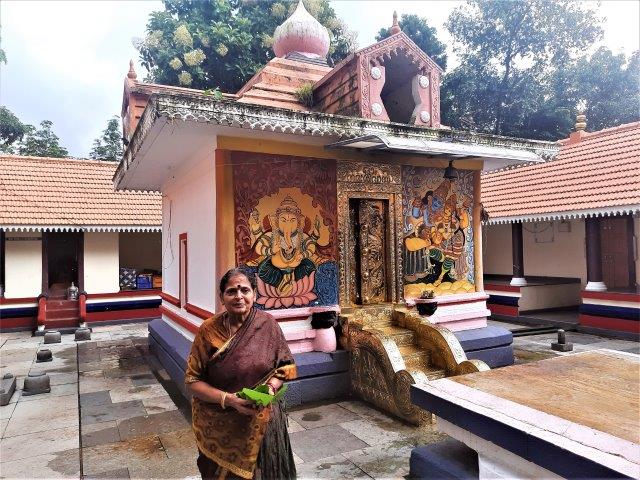
The main festival observed in the temple is Mahashivratri. Mondays are considered auspicious to offer prayers here. Pradosham is another important day in the temple.
As per local history, the temple belonged to Chalapurathu Mana. The shrine is currently management by a committee formed by local people.
The temple timings are : 5-9.30 am, 6-7.30 pm. The temple is Managed by a local committee- Contact for darshan, Pooja : Shibu Shanti Nambudri 9447116397
10. Chakkamkullangara Shiva Temple, PRST15
Chakkamkullangara Shiva Temple, Post Office Rd, Thrippunithura, Kochi, Kerala 682301 PRST15 Chakkamkullangara Shiva Temple located at Thrippunithura Kerala at a distance of 10 kms from Kochi is a Parashurama Siva Temple PRST15 . Sri Parashurama is the sixth Avatar of Lord Vishnu and He established 108 Shiva Temples, 108 Bhagavathy temples and 108 Dharma Sastha temples in Kerala

It is just near Poornathrayeesa temple, on the north gate one famous Adampillikavu Bhagavathi temple on the southern side, this Siva temple in Chakkamkulangara. Darshan is towards west. Thrippunithura is one of the Brahmin settlement in the ancient Kerala and Capital of Cochin kingdom. The temple structure is made kerala-dravidian architecture style and is more than 1000 years old.

The Chakkamkulangara temple is dedicated to Lord Shiva however temple is equally famous for the Navagraha pratishta At Chakkamkulangara, Lord Siva is “Swayamvara Murthy” (self manifested) though originally it was in the form of “Mrityunjaya” in his fierce (‘ugra’) form facing west, featuring eight hands with various attributes.
The Lord here is facing West featuring eight hands with various attributes while Goddess Parvathi is facing East. It is said that this temple was established by the Cochin Royal Family. Now the temple is under Cochin Devaswam Board. Lord Vinayaka, Dharamasastha and Navagrahas are also worshipped in the temple compound. In the stotra of 108 siva temples, Chakkamkulangara is referred as “Atampally” (AtampaLyErampaLikkATu cErAnellAru mAniyUr).

Thrippunithura is one of the Brahmin settlement in the ancient Kerala and Capital of Cochin kingdom. The temple structure is made kerala-dravidian architecture style and is more than 1000 years old. The Chakkamkulangara temple is situated north side of the Poornathrayeesa Temple in Thrippunithura. This is one of the prominent temples of the Kochi kingdom. The inner sanctum sanctorum is dedicated to Lord Shiva and the Goddess Parvati Devi is behind it. The sanctum sanctorum of Chakamkulangara is facing to west. There is a large pool on the west side of the temple

Temple celebrates 7 days Sivarathri festival in the Malayalam month of Kumbham (February – March) in every year. Contact for darshan, Pooja : Riari Namdudri 9400075718, 02804, 2778718, +91 94961 79645 ; Temple Timings are : 4.30- 10.30 am,4.30- 8 pm. To return to Index of Contents, Click Here. Otherwise continue
11. Sree Mahadeva Temple Pattanakkad, PRST 3

Sree Mahadeva Temple Pattanakkad, P8J9+786, Pattanakkad, Kerala 688531 PRST 3 Sree Mahadeva Temple located at Pattanakkad Alapuzha Kerala at a distance of 25 kms from Kochi is a Parashurama Siva Temple PRST 3. Sri Parashurama is the sixth Avatar of Lord Vishnu and He established 108 Shiva Temples, 108 Bhagavathy temples and 108 Dharma Sastha temples in Kerala.
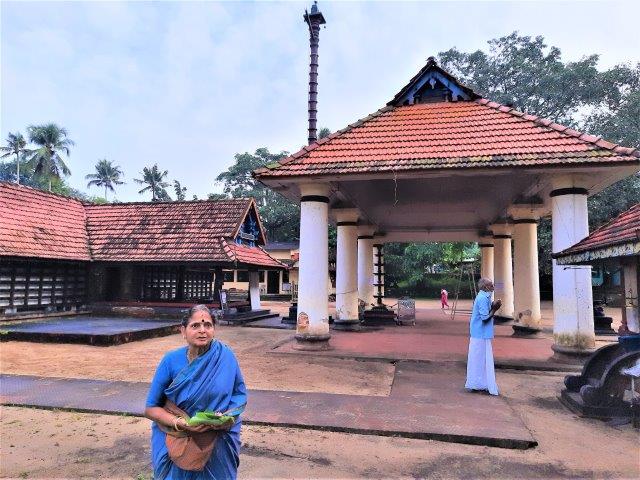
The Sri Mahadeva Temple is dedicated to Lord Shiva The Swayambu (self manifested) Shiva is Kirtamurthy here. The darshan is towards the east. Temple is built in typical Kerala Style Architecture.

Other deities include Ganapathy, Subramaniyan, Ayyappan, Yakshi, Nagaraja and Nagayakshi. The temple originally belonged to the Anakottil Kartas.
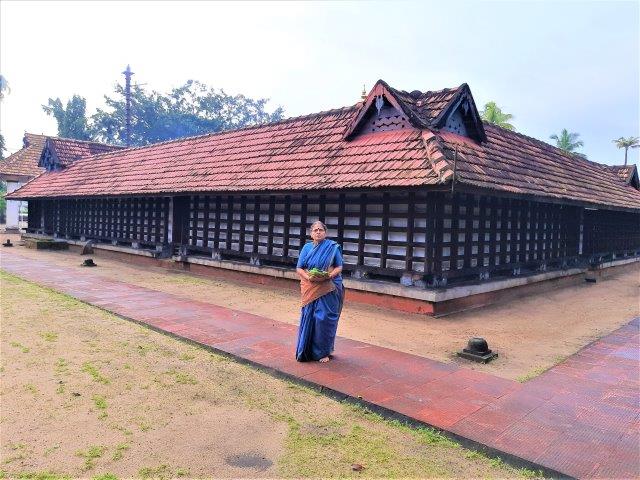
The annual temple festival in the shrine is observed for 8 days in such a way that the festival ends with Arattu on the Mahashivratri day in Kumbham month.The Arattu is observed on the 4th pada or the last quarter of Amavasya day. So the festival might extend to the 9th day.

There is also a beautiful tourist beach Andhakaranazhy near the town about 4 km from Poonamveli
Temple timings are : 5.30- 11 am;5-7.45 pm. Contact for darshan, Poojas: Shaiji Nambudri 7012295658
12. Velorvattom Sri Mahadeva Temple , PRST1
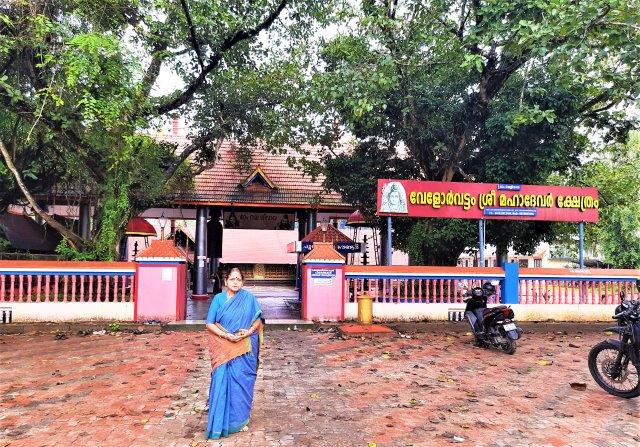
Velorvattom Sri Mahadeva Temple , Chethala Rd, Velorvattom, Cherthala, Kerala 688524 PRST1 Velorvattom Sri Mahadeva Temple located at Velorvattom, Cherthala, Kerala at a distance of 34 kms from Ernakulam and 23 kms from Alapuzha is a Parashurama Siva Temple PRST1 . Sri Parashurama is the sixth Avatar of Lord Vishnu and He established 108 Shiva Temples, 108 Bhagavathy temples and 108 Dharma Sastha temples in Kerala.

“Velorvattom Maha deva temple”, was owned by “Azhvanchery Thamprakkal” and now maintained by Kerala Urazma Devasam Board (KUDB). It is believed that the temple was created by Vilwamangalam Swamiyar about 700 years ago. There are two deities of Lord Shiva in the temple, which are known as Vadakkanappan and Thekkanappan..
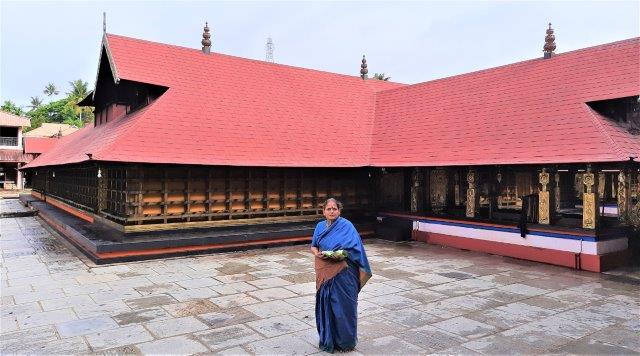
The Velorvattom Sri Mahadeva Temple is one of the few temples of the state where two Nalambalam and two Flagmast are dedicated. This Temple is Kudumbha kshetram or family moolasthana prathista for many famous Families in Kerala.

The Temple has two Nadas ,two Dhawjas and Sreekovils in which Lord Shiva resides in two forms which is very rare in Kerala. This temple is considered to be the MoolaKudumbam of many well known Families in Kerala.
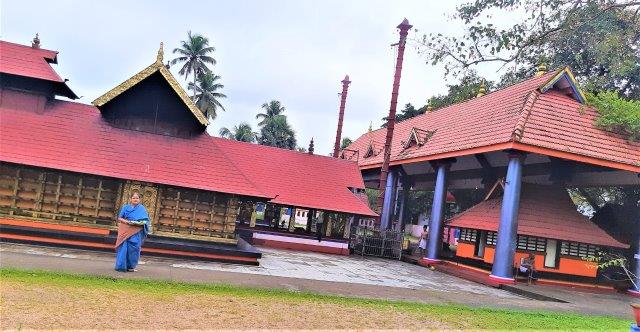
One on the north side known as the Vadakkanappan is considered to be the original pratishta and the pratishta on the south side is a Swayambhoo Vigraham called the Tekkanappan. A Bull is also reared by the authorities in the temple premises as it is considered to be closely related to Lord Shiva. It is believed that Nirmalya Darsanam in Velorvattom Mahadeva temple can lessen our sufferings and bring prosperity to our lifes. Other subdeities are of Mahavishnu, Shasthavu, Ganpathi, Yakshiamma and Naga Pratishta.The Naga Pratishta is given equal importance in this temple. Shivaratri is being celebrated on a grand scale in this temple. An Eight days festival is celebrated in the malayalam month of Kumbham.
Velorvattom Mahadeva Temple has its annual festival celebrated in the month of feb-March.Devotees offer Purakuvilakku, Koovala Mala, Dhara, Sangabhishekam, Mritunjaya Pushpanjali for Lord shiva and PattumManjal and Talichukoda for Naga pratishta. There is also a Vazhipadu named Pitrunamaskaram which is made as an offering to the souls of the ancestors. The temple is conventionally decorated with plantain, coconut leaves, flowers, leaves, traditional lamps and lights.

Melam, the panchavadya, a traditional Kerala temple music performance with five instruments, are performed as part of the festival. Traditional performing arts, music and dance are staged during the period.The festival ends with Arattu. The utsava murti (procession deity) of the deity is taken out of the temple for ritual bathing on the final day. Caparisoned elephants and melam are part of the ritual. Contact phone numbers: +91 478 281 3466, 0478 281 3466; Temple timings are : 4.30 -11.30 am; 5- 7.30 pm
13. Vaikom Sree Mahadeva Temple, PRST 13
Vaikom Sree Mahadeva Temple ,Vazhamana Rd, Vaikom, Kerala 686141 PRST 13 Vaikom Sree Mahadeva Temple located at a distance of 3 kms from Vaikom, Kerala and at a distance of 32 kms from Ernakulam is a Parashurama Siva Temple PRST13 . Sri Parashurama is the sixth Avatar of Lord Vishnu and He established 108 Shiva Temples, 108 Bhagavathy temples and 108 Dharma Sastha temples in Kerala.

See below my You tube video which gives a lot of information about this temple.
Vaikkom’s Shiva is fondly called Vaikkathappan is one of the oldest temples in Kerala. The Shiva Linga here is believed to be from the ‘Treta yuga’ and considered as one of the oldest temples in Kerala where pooja has not been broken since inception.

Held in reverence by both Shaivaites and the Vaishnavaites, the temple was also the central point around which the Vaikom Satyagraha took place. The presiding deity is Lord Shiva. As per legend, Khara, an asura did severe penance; Lord Siva, who was pleased gave him three idols. Khara carried the idols – one each in either hands and one by his neck. He got tired on his way back and put the idols down and rested a while. When he woke up, he realised that he could not pluck the idols out. These three idols, it is said, are the ones that are being worshiped at Vaikom, Kaduthuruthy and Ettumanoor inKottayam district.

Khara, having attained moksha, entrusted saint Vyaghrapada with doing the pujas and rituals. The saint observed the rituals and did the pujas. Then, Parasurama arrived and he consecrated the idol at Vaikom making it popular among both Shaivaites and the Vaishnavaites.
The east facingtemple is situated in about eight acres of land and is protected by compound walls with four towers on all the four sides. Near the east tower is a protected platform known as the ‘Vyaghrapada Sthana’, which is the place where the God appeared before saint Vyaghrapada. There is a golden flag staff and once we enter the temple is the ‘Stambha Ganesha’ to the north east corner. There is a namaskara mandapa, with episodes from Ramayana sculpted in the inner roof. A huge Nandi idol is placed just outside the main sanctum santoram.

The temple is round in shape and there are beautiful paintings and sculptures all around. There are six steps which take you inside the main shrine that houses the God. ‘Manya Sthana’ is where thesaint Vilwamangalathu Swamiyar, who could see Gods spotted the Lord while having food. The main kitchen is towards the east of the ‘Manya Sthana’.
There is a closed door to the west of thetemple. The temple, in old times, belonged to 108 families. When a dispute erupted the families got divided into two camps, one division naturally aligned with the king. The other camp vowed to block the rituals in the temple. Their leader, Njallal Namboodiri, reached the temple, chewing betel leaves. He entered the temple through the westgate and went into the temple where the offerings were made. He spat on the offering, forcing the rituals to stop. On his way back, he was bitten by a snake at the west gate. The western door mysteriously closed and a voice was heard, commanding that the door be closed. And it remains shut, to this day.

As per another legend, Long long ago, before India attainedindependence, untouchability and casteism was prevalent across all the princely states of Kerala. The roads around Vaikom temple became the venue for the agitation known as the Vaikom Satyagraha. Many national leaders including Mahatma Gandhi talked to the kings of Travancore who later signed the Temple Entry Proclamation which is considered as a milestone in the history of the land. Vaikom temple was among the first to open its doors to all.
The annual festival – the [Ashtami] is a very elaborate affair. It is believed that a visit to all these three temples – Vaikom Mahadeva Temple ,Kaduthuruthy Siva Temple and Ettumanoor temple – before ‘ucha puja’,which signifi es the puja before lunch, is very auspicious. It is said that Lord Shiva is worshiped as Dhakshinamoorthy in the morning, Kirathamoorthy at noon and Shakti panchakshari in the evening.
The temple timings are : 4am -11.30 am ; 5-8 pm; Contact phone number : +91 4829 215 812;
14. Ernakulam Shiva Temple, PRST10
Ernakulam Shiva Temple, Durbar Hall Rd, Marine Drive, Ernakulam, Kerala 682011 PRST10 Ernakulam Shiva Temple located at the heart of Ernakulam, in downtown area of the city of Kochi., Kerala is a Parashurama Siva Temple PRST10 . Sri Parashurama is the sixth Avatar of Lord Vishnu and He established 108 Shiva Temples, 108 Bhagavathy temples and 108 Dharma Sastha temples in Kerala. See below my You tube video which gives a lot of information about this temple.
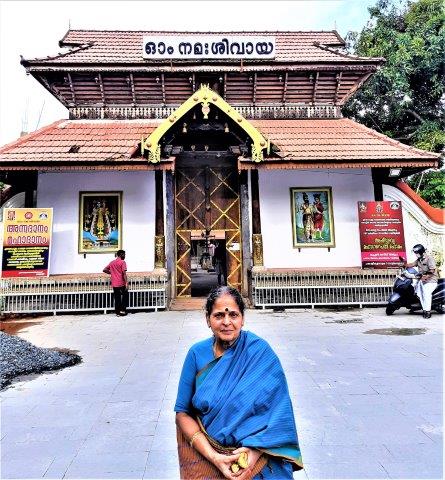
The temple, dedicated to Lord Shiva, is considered as the city temple, with the presiding deity as the protector of the city, as per local Hindu faiths and traditions. As per the common practice in Kerala, the deity is reverently called Eranakulathappan, which means Lord of Eranakulam. The temple is located within the Durbar Hall Ground. The temple history itself has a deep association with the history of the city and was one of the 7 royal temples of Kochi Maharajas.
Ernakulam Shiva Temple is one of the major Shiva temples in Kerala counted along with the Ettumanoor Mahadevar Temple, Kaduthruthy Mahadeva Temple, Vaikom Temple, Chengannur Mahadeva Temple and Vadakkunathan temple.

It is the one of the rarest temple the idol of the god facing in the west direction. It is decorated with a golden flagpole. The other Gods worshipped in this temple are Parvathy, Ganapathy, Sastha, Kirathamoorthy, and Nagaraja. It is one of the ancient Shiva temples in Kerala. Gate placed on the east side is called as Devi gate.
The legend of Ernakulam Shiva Temple is linked to the Mahabharatha story of Arjuna, the third Pandava. Once Arjuna got into a battle with Lord Shiva, who was testing his devotion in the guise of a Kirata or a tribal. After being defeated by the tribal, Arjuna made a Shiva Linga in mud and started praying. Pleased with his devotion, Shiva blessed Arjuna and presented him with the Pasupathastra.

However, the idol made by Arjuna remained lost in the forest till a sage named Devala found it. He had a snake’s body because of a curse by his Guru and once he worshiped the idol sincerely, he was redeemed. . Then the god appeared before him and told to take a dip in the pond where the present pond is located inside the temple. Then he was relieved from his curse. The pond in which Devala bathed after being cured of the curse is known as Rishinagakulam. Later that place is turned as famous Ernakulam Siva temple..
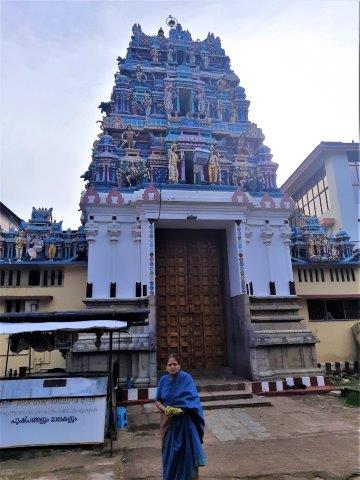
The Ernakulam Shiva Temple is built in typical Kerala temple architecture in about 1.2 acres. The Sanctum complex is circular with fine sculpted walls. The roof is covered with copper tiles. The Ernakulam Shiva Temple has two gates, the western Gopuram is a two storied structure in typical Kerala architecture with gabled roofs and slanting windows. The eastern gopuram is recently renovated similar to the western side.
The presiding deity of the Ernakulam Shiva Temple is Lord Shiva in Gourisankara form, located in main sanctum sanctorum, facing west towards the Arabian sea. The idol in the sanctum sanctorum is Swayambhoo (self manifested). On the northern side of the main sanctum sanctorum, there is the small shrine of Kirthamoorthy, which has the original Lingam worshipped by Arjuna. On the southern side, there is a small shrine for Lord Ganesha and the small area behind the main sanctum sanctorum is considered as abode of Goddess Parvati. Hence the east gate is known as the Devi Gate. Outside the Inner Ernakulam Shiva Temple circle, shrines for Lord Ayyappa and Nagaraja are situated.

The pooja methods were regularised as directed by the famous Villawamangalathu Swamiyar. The Linga Prathishta was made facing west. Devotees who dedicate themselves to the lord with utmost devotion are said to be relieved of their sufferings leading to ultimate ‘Moksha’.
On the northern side of the main Ernakulam Shiva Temple , is a temple dedicated to Lord Muruga. This temple is built in Tamil style. On the eastern side of Ernakulam Shiva Temple , a Hanuman temple is built in Kannadiga Udupi Madhwa Sampradaya style. Special poojas are conducted on all days of the annual festival, which will be led by famous priests from Chennose and Puliyannur Mana. Temple timings are : 3.30 AM Till :11AM and 4 PM to 8 PM
15. Sri Siva Subrahmanya Swayambhoo Temple, PRST 12
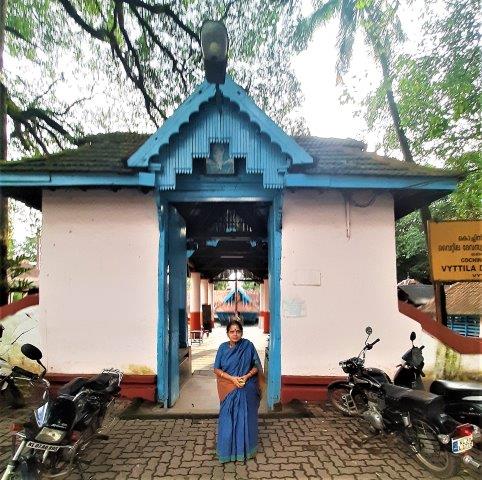
Sri Siva Subrahmanya Swayambhoo Temple, Tripunithura Road Vyttila Ernakulam, Kerala 682019 PRST 12 Sri Siva Subrahmanya Swayambhoo Temple is located in Vyttila Ernakulam, Kerala at a distance of 5 kms from the City center. It is a Parashurama prathishta Siva Temple PRST12 . Sri Parashurama is the sixth Avatar of Lord Vishnu and He established 108 Shiva Temples, 108 Bhagavathy temples and 108 Dharma Sastha temples in Kerala

The temple has a three feet high Subrahmanya in standing pose with Vel and Mayil. Separate Shiva , Sastha and Bhadrakali sannadhis are there in the temple.. It is situated on a busy roadside – but when one enters the temple, lots of open spaces and sannadhis are located. It is under the administration of Cochin Devaswom Board.
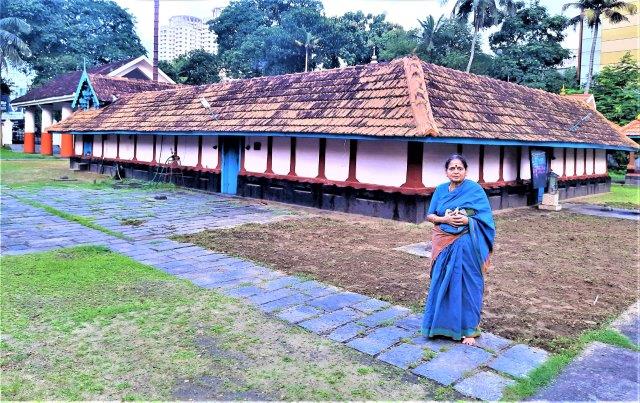
The temple timings are : 5am –10 am and 5 pm-8 pm. Contact for darshan and Poojas :Vishnu 9072779119. To return to Index of Contents, Click Here. Otherwise continue
16. Tirunettur Mahadeva Temple, PRST 12
Tirunettur Mahadeva Temple, Ambalakadavu Rd, Near Temple Road, Nettoor, Maradu, Ernakulam, Kerala 682304 PRST 12 Tirunettur Mahadeva Temple located at Nettoor, Kerala at a distance of 8 kms from Ernakulam, and 6 kms away from Vytilla. is a Parashurama Siva Temple PRST12. Sri Parashurama is the sixth Avatar of Lord Vishnu and He established 108 Shiva Temples, 108 Bhagavathy temples and 108 Dharma Sastha temples in Kerala

Thirunettoor Mahadeva Temple is also popularly called the Nettoor temple or the Vyttila Mahadeva temple. Another belief is that this temple had the distinction of being a common temple for all the major Namboothiri families residing in the 32 Namboothiri villages of Kerala. This temple is also known as ‘Thekkan Kashi’ (Southern Kashi)
The temple has two main deities, Sri Parameswara and Maha Vishnu. Deities having separate temple complex; Lord Sri Parameswara in the form of Sri Rudra and Maha Vishnu in the form of Vaikundeswara. Both deities are facing east.
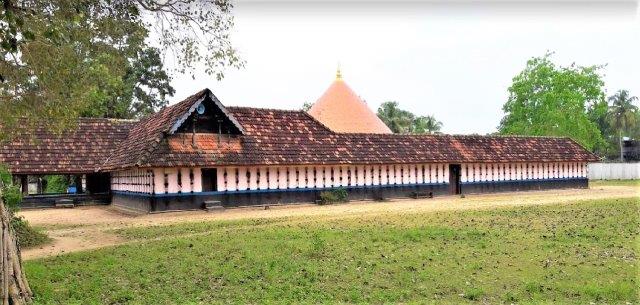
It is believed that Vilwamangalam Swamiyar visited Thiru Nettur Shiva Temple and he had suggested the construction of the temple of Vishnu idol. Apart from the temples of Lord Shiva and Lord Vishnu; there is Sri Krishna temple. Deities in the Thirunettur temple include Ganapathy, Krishnan, Subramanya, Saraswati, Yogiswaran and Pamban Devan.. Under the guidance of Puliyannoor thanthri, poojas are conducted three times a day for each deity.
The temple compound is 5.5 acres; Sri Mahadeva (Lord Shiva) and Lord Vishnu have been built in a separate temple complex. The four sides of the circumference of the Siva temple have been completed and the Nalambalam of Vishnu temple is halved. The temple complex (Nalambalam, Sanctum Santorium) and the lighthouse are built in the Kerala style of architecture. Likewise, the prayer hall and the bellikkal pura are beautiful.
The Kodiyattu festival in the temple is celebrated in Dhanu, lasting for eight days and ending with arattu (holy bath) on Thiruvathira day. Since both the temples have flag masts, the festival is common. Shivarathri and Ashtami Rohini are also celebrated with great pomp and flavour.

Devotees visit this temple to seek fulfillment of the following:- Salvation, Wealth, Relief from diseases, Purchase of vehicles, Gain Knowledge. Offerings : Thirunettoor Mahadeva Temple is renowned for ‘balitharpan’, a ritual offered for the dead ancestors during the ‘amavasya’ or the full moon day of the month of Karkkidakam. On the day of Karkidaka vavu as well as the new moon day of Malayalam month of Kumbham large number of devotees visit the temple for paying obeisance to their dead ancestors. Vadapooja is the main offering during these days.
Temple timings are 5 AM 10.30 AM 5.30 PM to7.30 PM ; Contact for darshan, Poojas : 9496226953 Baburaj.The annual temple festival falls on the Uthrattathi and Aswathy day of the Malayalam month of Dhanu. The temple is managed by Cochin Devaswom Board.
17.Thiruvalloor Mahadeva Temple, PRST 19
Thiruvalloor Mahadeva Temple, 4895+FGJ, Kerala 683511 PRST 19 Thiruvalloor Mahadeva Temple is located in Thiruvalloor Kerala at a distance of 24 kms from Ernakulam .It is a Parashurama Siva Temple PRST19. Sri Parashurama is the sixth Avatar of Lord Vishnu and He established 108 Shiva Temples, 108 Bhagavathy temples and 108 Dharma Sastha temples in Kerala

See below my You tube video which gives a lot of information about this temple.
The temple is dedicated to Shiva.Goddess Parvati is worshipped in a ferocious form in the temple. The specialty of the temple is that Shiva is worshipped with his third eye open – Agni Pratistha.

A temple pond is located on the east side of the sreekovil or sanctum sanctorum. The pond water is believed to cool down the effect of Agni emanating from the third eye of Shiva. The pond is in line with the sreekovil. There is no abhishekam or dhara in the temple as the pratishta in the temple is Agnithwa Shiva Lingam. The dhara vazhipadu of Thiruvalloor temple is performed at Iravipuram Shiva temple.

The temple has a circular sanctum sanctorum – vatta sreekovil. Ganapathi prathishta in the temple is adjacent to the sreekovil on the southside. The darshanam of Ganapathi is towards north.
The 8-day annual festival in the temple concludes on Vishu day after Vishukani. The Koodeyirikkam takes place after Vishukani
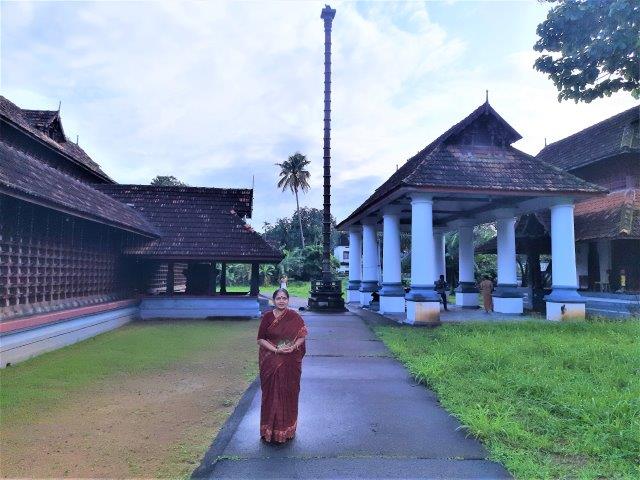
Legend has it that Sooryakalady Bhattathiripad, a famous tantric, was cursed by a Yakshi and Gandharva that he would die on the 14th day if did not have the evening puja and darshanam (deeparadhana) on the day in Thiruvallur Mahadeva temple. Sooryakalady Bhattathiripad made all arrangements to have darshanam during deeparadhana on the 14th day evening at Thiruvallur Mahadeva temple. But on the 13th day there a voice was heard from the Thiruvallur Mahadeva temple sreekovil. The voice asked the pujari to close the temple the next day after uccha puja at 10 AM and then not to open the shrine for the day.
When Sooryakalady Bhattathiripad arrived at the temple for puja, the sanctum was closed. He tried all means to open the temple but could not. In pain, he is said to have jumped and bitten the wooden roof of the temple. The teeth marks and his footsteps are still seen in the temple.
Another legend of the temple is associated with Ramayana. It is said that tail of Jatayu fell here when he attempted to stop Ravana from carrying Sita away to Lanka.
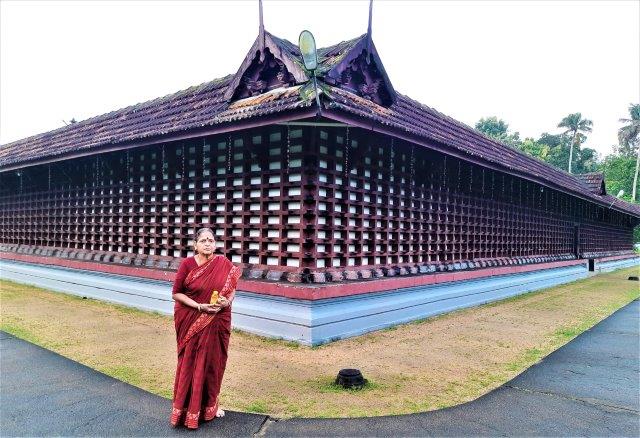
As per history, the temple belonged to 28 Illams in Uliyannoor Gramam. The temple was destroyed by a lightning. The temple was renovated by Sree Moolam Thirunal Maharaja. Keezhanikavu is located next to Thiruvalloor Mahadeva Temple. The shrine is dedicated to Vishnu Bhagavan. Goddess Bhagavati and Naga (serpents) are worshipped here. The temple is noted for a Rudraksha tree on its premises.
The main festival of the temple is celebrated in April and ends one day before Vishu. The Aarattu aka Divine Bath is a part of the festival and is held at Aluva in Periyar river. Temple timings : 4 AM to 11 AM and Evening: 5 PM to 7.30 PM Contact Phone for darshan, Poojas : 0484 320 1020
18. Kunnathu Thali Mahadeva Temple,PRST 18
Kunnathu Thali Mahadeva Temple, Aarankaavu, Chendamangalam, Kerala 683521 PRST 18 Kunnathu Thali Mahadeva Temple is located in Chendamangalam, Kerala at a distance of 30 kms from Ernakulam. It is a Parashurama Siva Temple PRST18. Sri Parashurama is the sixth Avatar of Lord Vishnu and He established 108 Shiva Temples, 108 Bhagavathy temples and 108 Dharma Sastha temples in Kerala. It is believed that Lord Siva resides here in the form of Vaikkathappan himself

This temple was built during the 18th century and is maintained by the Paliam Trust. The shrine has a prominent place in the ancient scheme of the 108 Shiva shrines. Of the 18 and a half Talis, this is the place where a monarch took solemn decisions with the Lord as witness.
Possibly derived from the name Chendrathrikkovu, Chendamangalam is known to many for its handloom. A big peepal tree on the road side with Ganesha idol underneath welcomes us. The temple is located in the center of a large compound with around 7 sub-shrines which has Brahma, Vishnu, Dakshinamoorthy, Aghoramoorthy and Bringiradi. The idol of Brahma, a bust with four faces, has its sanctum in semi-elliptical form. The main sanctum of the temple which houses the presiding deity Lord Siva in linga form, faces East. The idol of Sastha with the consorts Poorna and Pushkala, Kodungallur Bhagavathi and Sapthamathrukkal consecrated in the inner prakara states the antiquity of the temple.
The main shrine and its surroundings however has its old charm punctured by crude constructions – the iron grill around the Balikkalpura, the metallic roofing inside, partial and sub-standard paintings on the wall, cemented floors, the water-well covered with endemic plants all have virtually rubbed out its true feel. The wooden pillars of the sanctum are broken in many places and infected by termites. The entire surroundings of this temple is deeply peaceful which itself is a big blessing to the people of this village.

As per the legend, Lord appeared here for the sake of his great devotee, a Paliath Achan who due to infirmity of old age could not go to Vaikom temple for his annual worship. Vaikath Ashtami is also celebrated here. Annual temple festival is of seven days duration counting day 1 after Kodikayattam. Kodikayattam seven days before the new moon day in the Malayalam month of Kumbham. Shivarathri falls during the annual festival of this temple.
Visited on 14-07-2022 Unfortunately, the temple was Closed by 8.30 am ! Hope with God’s grace will have darshan shortly.
19. Kodungallur Sree Kurumbha Bhagavathy Devi Temple, PRST 92
Kodungallur Sree Kurumbha Bhagavathy Devi Temple, Pettumma, Kodungallur, Kerala 680664 PRST 92 Kodungallur Sree Kurumbha Bhagavathy Devi Temple is located at Kodungallur, Kerala at a distance of 38 kms from Thrissur. It is a Parashurama Siva Temple PRST 92. Sri Parashurama is the sixth Avatar of Lord Vishnu and He established 108 Shiva Temples, 108 Bhagavathy temples and 108 Dharma Sastha temples in Kerala

See below my You tube video which gives a lot of information about this temple.
It is dedicated to the goddess Bhadrakali, a form of Maha Kali or Parashakthi The goddess is known also by the names “Sri Kurumba”” (The Mother of Kodungallur).This temple is the head of 64 Bhadrakali temples in Kerala especially Malabar. This Maha Kali temple is one of the oldest functioning temples in India. The temple has a majestic six-feet-high wooden image of Goddess Kali, the presiding deity.The goddess of the temple represents the goddess in her fierce (‘ugra’) form, facing North, featuring eight hands with various attributes. One is holding the head of the demon king Daruka, another a sickle-shaped sword, next an anklet, another a bell, among others.
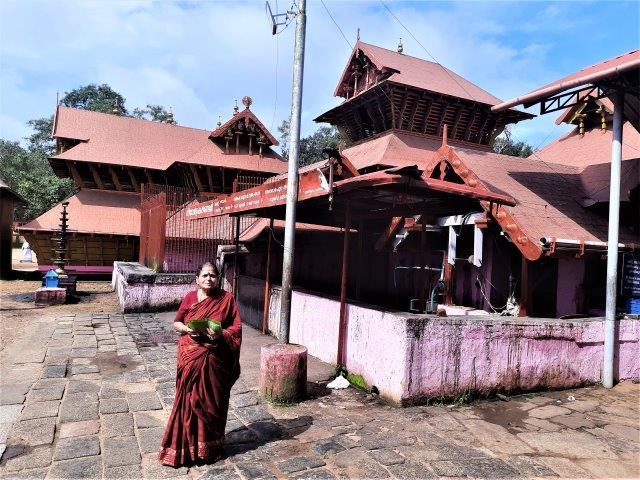
During the reign of Later Cheras, Mahodayapuram (Kodungallur) was the capital of the Chera empire and one of the most important parts of the region. The temple is located in Thrissur district,Central Kerala. The Temple was built in a remote past and its worship incorporates ancient Shaktyem customs which are rarely observed in contemporary Kerala temples.
It is believed that this temple was, in the olden days, a Shiva shrine and it was Parasurama who installed the murti of Bhadrakali close to one of Shiva. The pujas are conducted, under direct instructions from the goddess herself. Five ‘Sri Chakras’, said to have been installed by Adi Shankaracharya, are believed to be the main source of the powers of this deity. The priests are Namboodiris and Adikas (Madhu Brahmins) who have a right to perform ‘Pushpanjalis’ to the Goddess.

It is in this temple, Kannaki Amman, the heroine of Ilango Adigal’s Tamil story Silappathikaram attained salvation. She came to Kodungallur, prayed to Bhadrakali of Kodungallur and became absorbed in the murti.
The first Shakteya Pooja in kodungallur temple was performed by a Thiyyar from Malabar. Even present day , The Thiyya thandans (An administrative position) of 64 tharas meet at Nilapaduthara at Kodungaloor in the presence of kodungallur raja. The kodungaloor meena bharani is conducted under these Thiyya thandans.
In Tantric terms, the divinity is installed in what is called the “Rurujit Vidhaana” pattern, a form of installation with Shiva in one end, Ganesha in the other, with the Sapta Matrika goddesses in between.
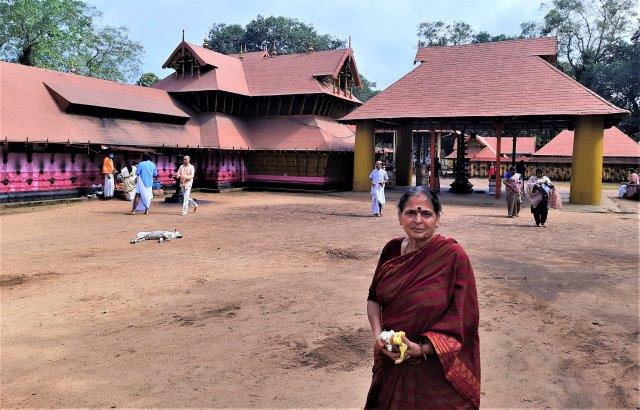
In ancient times, animal sacrifices were offered at the temple, mostly in the forms of birds and goats, by devotees seeking protection and the fulfillment of their prayers. At the intervention of many “social reformers,” the government of Cochin banned animal sacrifice in any form at this place. At present, only red-dyed dhotis are offered to the deity. Many devotees offer rich presents and gold ornaments.
The temple is situated in the middle of a plot of land about ten acres, surrounded by banyan and peepal trees. The srikovil is facing north. The western chamber of the inner temple is the seat of Sapthamatrukas (Seven Mothers) who also face north. The idols of Ganapathi and Veerabhadra are found in the chamber, one facing east and the other facing west, respectively. The idol of bhagawati is about seven feet high and made of wood, carved from a jackfruit tree. The idol has eight arms that carry weapons and symbols.
To the left of the temple sits a small stone structure called ‘the Samadhi of Vysoori’, perhaps a medieval shrine for a deity of smallpox, chicken pox, mumps and other contagious diseases. Devotees make offerings of turmeric powder, sprinkled and rubbed on its walls. About fifty metres further is a sacred pond called (Pushkarini), where devotees bathe before entering the main shrine. It is believed that this pond was created by the goddess by striking the ground with her sword.
The temple is known for its Bharani festival, one of the major festivals in Kerala. Routine worship at the temple every day at 03:00 and ends at 21:00 local time
20. Cheranalloor Sri Mahadeva Temple, PRST16

Cheranalloor Sri Mahadeva Temple, Kalady Cheranalloor, Cheranalloor, Kerala 683544 PRST 16 . See details of the temple in my Blog : Kerala Temples IV Part 5 of 5 Kozhikode, Ernakulam, Kottayam, Pathanamthitta and Idukki district temples
21. Thrikkariyoor Mahadeva Temple, PRST9
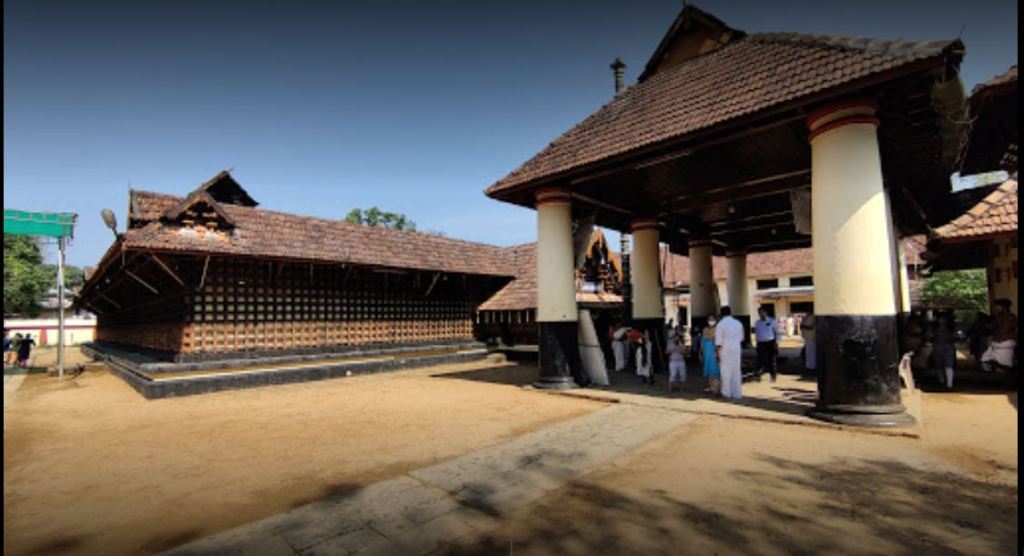
Thrikkariyoor Mahadeva Temple, Nellikuzhi Thrikkariyoor Road, Thrikkariyoor, Ernakulam, Kerala 682011 PRST 9 . See details of the temple in my Blog : Kerala Temples IV Part 5 of 5 Kozhikode, Ernakulam, Kottayam, Pathanamthitta and Idukki district temples To return to Index of Contents, Click Here. Otherwise continue
22. Thaliyil Mahadeva Temple, Thazhathangady, Kottayam, PRST35

Thaliyil Mahadeva Temple, Thaliyil Rd, Thazhathangady, Kottayam, Kerala 686001PRST 35. See details of the temple in my Blog : Kerala Temples IV Part 5 of 5 Kozhikode, Ernakulam, Kottayam, Pathanamthitta and Idukki district temples
23. Thirunakkara Mahadeva Temple, PRST 37

Thirunakkara Mahadeva Temple, Temple Rd, Thirunakara, Kottayam, Kerala 686001 PRST 37. See details of the temple in my Blog : Kerala Temples IV Part 5 of 5 Kozhikode, Ernakulam, Kottayam, Pathanamthitta and Idukki district temples
24. Parippu Mahadeva Temple PRST33
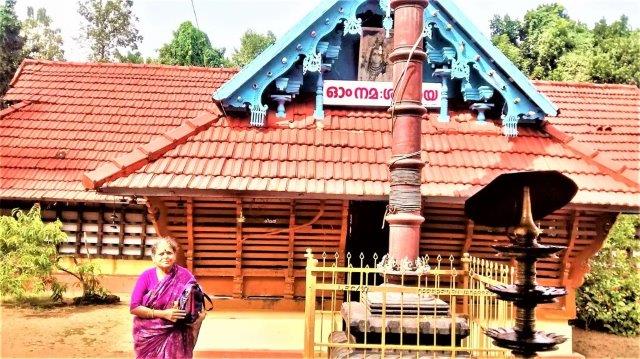
Parippu Mahadeva Temple, Kottayam, Kerala 686024 PRST 33 . See details of the temple in my Blog : Kerala Temples IV Part 5 of 5 Kozhikode, Ernakulam, Kottayam, Pathanamthitta and Idukki district temples
25. Ettumanoor Sree Mahadeva Temple, PRST34
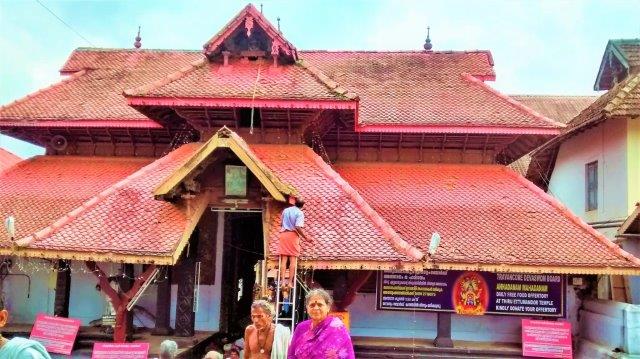
Ettumanoor Sree Mahadeva Temple, Ettumanoor Temple Road, Kottayam, Ettumanoor, Kerala 686631 PRST 34 See details of the temple in my Blog : Kerala Temples IV Part 5 of 5 Kozhikode, Ernakulam, Kottayam, Pathanamthitta and Idukki district temples
See below my You tube video which gives a lot of information about this temple.
26. Kaduthuruthy Thaliyil Temple, PRST36

Kaduthuruthy Thaliyil Temple, Temple Rd, Kaduthuruthy, Kerala 686604 PRST 36. See details of the temple in my Blog : Kerala Temples IV Part 5 of 5 Kozhikode, Ernakulam, Kottayam, Pathanamthitta and Idukki district temples
See below my You tube video which gives a lot of information about this temple.
27. Kundannoor Sree Mahadeva Temple
Kundannoor Sree Mahadeva Temple, Near Chilavanoor Road Theeradesa Road Kundannoor, Nettoor, Maradu, Ernakulam, Kerala 682304 Kundannoor Sree Mahadeva Temple is located in Kundannoor, Nettoor, Ernakulam, Kerala at a distance of 7 kms from Ernakulam junction.

The temple is rather small, but neat. Has a dedicated Archakar. It is run by the Sree Narayana Dharma Paripalana Yogam (SNDP). SNDP is a social service organization that has been representing the Ezhava community from Kerala since 1903. The S.N.D.P Yogam was founded by Dr.Padmanabhan Palpu and other Ezhava leaders with the blessing of Sree Narayana Guru. The organization aimed to lead the Ezhava community to the religious reform movement and to achieve economic prosperity and educational opportunities.

The Sree Narayana Trust is founded by the SNDP Yogam to start, and manage educational, social, and economical institutions with the vision of Narayana Guru.
The temple contact number is : +91 94471 90523 . Temple timings are : 5 am to 10 am; 5.30 -7.30 pm.
28. Thuravoor Mahakshethram Narasimha Temple
Thuravoor Temple, Thuravoor Mahakshethram, Thuravoor P.O, Thuravoor, Cherthala, Kerala 688532 Thuravoor Mahakshethram is located in Thuravoor Cherthala, Kerala at a distance of 25 kms from Ernakulam. The Narasimha Swamy temple is dedicated to the fourth incarnation (avatara) of Vishnu, the Narasimha. It is the largest Narasimha temple in Kerala.The temple has two main deities, the Vadakkanappan (Lord Narasimha) and the Tekkanappan (Lord Sudarshana), which is rare among the temples of Kerala.

Two separate temples in close proximity – within the same compound – reflect the synthesis of a unique and mysterious divine power. The idol of Sree Narasimhamoorthy is said to have originated in the holy city of Kashi (Varanasi). Swami Padmapadar (8th century AD), the principal disciple of Adi Sankaracharya, had worshipped the very same idol at Kashi.

Distinctive in its architectural and artistic grandeur, Thuravoor Mahakshethram is one of the most venerated places of worship in Kerala. Twin-Sreekovils in a single Nalambalam, two gold-plated flagmasts that tower into the skies, a majestically tall Anapandhal (elephant rostrum – the largest in Kerala), a strict regimen of observances of vrathas for the priests, days after days of rituals and festivals, chanting of Vedic hymns and presentation of learned discourses on Puranas throughout the year … all these attract streams of devotees to the temple from within and outside the State.

Of the two temples here, it is believed that the one dedicated to Sudarsanamoorthy was the first to come into existence. Though there is no record of its origin, the temple is estimated to be over 1300 years old. There are scholars who hold that the circular-shaped Sreekovil belongs to the Thretha Yuga; according to others, its origin dates back to the Dwapara Yuga. Some palmleaf texts on the temple do exist; but nobody has yet been able to understand or decipher them.
As for the Narasimhamoorthy temple, records do show that it came into being sometime in the 7th century AD, during the reign of a Chera king named Keralendran. His guru was the great Muringottu Adigal, a well-known Tulu Brahmin priest and scholar.

During his pilgrimage to Varanasi, a Namboothiri priest from Angamally had a supernatural vision. He saw a brilliant beam of light descending towards the earth and traveling in a southwesterly direction. The priest followed the beam closely. At a pre-ordained point in a village called ‘Poothanilam’ in central Kerala, the light hit the earth and disappeared into the ground. The priest dug the earth at this spot and saw an extraordinarily beautiful idol of Mahavishnu in Anjanakallu (a rare kind of black stone) buried underneath. While the idol was being salvaged, the heavens opened up and blessed the event with a shower of fireworks which lit up the sky and shook the earth with a thunderous sound. This Vishnu idol was later to become famous as Sree Narasimhamoorthy.
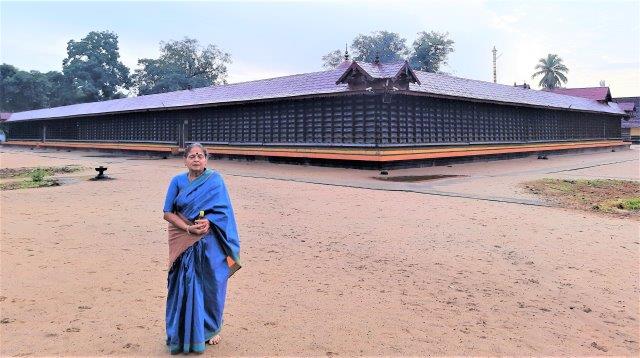
The priest enshrined the idol in a Sreekovil of its own near the sanctum of Sudarsanamoorthy. It is said that the idol occupies a site, which was originally the abode of Goddess Bhagavathy. The Bhagavathy idol was relocated at a place a little towards the west, as per Hindu ideology. Reinforcing this belief is the fact that the multi-tiered bronze lamp in front of the Narasimhamoorthy temple bears the image of a lion – the carrier of Goddess Bhagavathy. The place came to be also called ‘Surapuri’ – probably because of the presence of an entire galaxy of gods and goddesses.
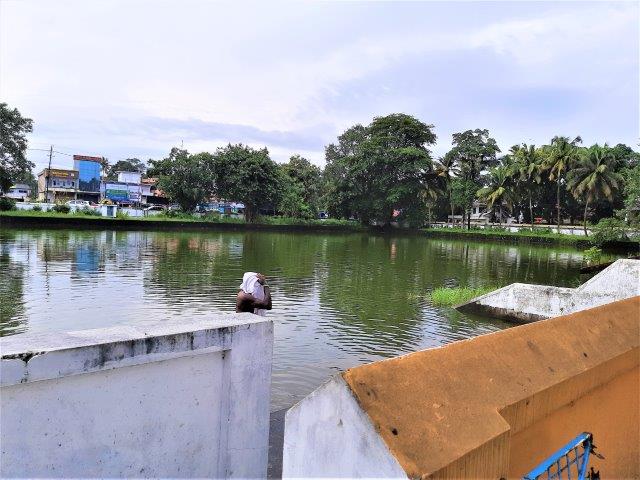
Sree Narasimhamoorthy temple (on the northern side) is separated by a wall, the two temples are interconnected. The fairly large, square-shaped, copper-roofed Sreekovil is built of granite. The Namaskara Mandapam is ornamented with sculptures of lotus blooms. The granite pillars on the Mandapam also feature highly imaginative carvings. One stone pillar carries the image of Deepalakshmi. The sculptures and murals on the outer walls of the Sreekovil are so beautiful; they will take your breath away. Kerala’s age-old tradition in temple architecture is reflected here.
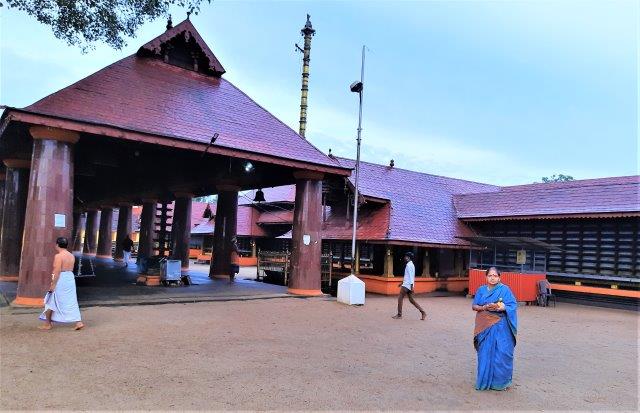
The walls of the Sreekovil are adorned with sculptures of elephant heads at regular intervals. Two of the elephants are with their trunks down, while the rest have their trunks raised. This may have been done to avoid monotony. The compound wall of the Sreekovil is also adorned with enchanting murals. The painting of Mahavishnu reposing on Anantha deserves specific mention. Since the temple was formerly in the Cochin territory, the God depicted is likely to be Sree Poornathrayeesa, the family deity of the Cochin royalty. Nataraja, Indra with his thousand eyes in the presence of Ugranarasimha, Sree krishna, and a damsel with her face turned away from a scene showing a love-lorn couple are some of the pictures that will linger in the mind of a visitor.
The Garbhagriha of the the Sreekovil has two ante-chambers. Here too, the idols of Dwarapalakas are installed in one of them. The Garbhagriha houses a beautiful, four-armed idol of Mahavishnu who is perceived as Ugranarasima. In the corridor on the southern side, there is an idol of Lord Siva. You can view and worship Him through the narrow window in the wall on the southern side.
Generally, Narasimha idols are seen in a sitting posture. But here, the idol is on its feet. One may assume that originally this idol in the standing position was originally that of Mahavishnu; and, as a result of poojas and other sacred rituals, it is being perceived as Ugranarasimha.
Connoisseurs of art within and outside Kerala agree that the sculptures, relief works and carvings on the southern side of the Sreekovil are priceless works of art. Scholars from afar often visit the temple for an in-depth study of these masterly creations. You can see here nine different perceptions of Narasimha including Ugranarasimha, Lakshmi Narasimha and Yoga Narasimha. Khadgi straddling an elaborately decorated horse, Yakshi carrying a hand-mirror and eloquent scenes from Ramayana are worth a close observation.
The Narasimha temple has its own gold-plated Garudadwaja, oriented towards the east. On the extreme eastern side, in the direct line of vision of the Narasimamoorthy shrine, is a massive temple tank measuring 100 x 80 meters. It is believed that the cool, clean, serene waters of the tank provide a calming effect on the Lord’s fierce frame of mind.
The idol of Sudarsanamoorthy features four arms, each carrying a different object: a conch shell, a chakra (discus), a gadha (mace) and a lotus bloom. The foreground of the temple is spacious and paved with rough-hewn granite slabs. The Namaskaramandapam is also fittingly large and impressive. On the ceiling of this Mandapam are exquisitely carved figures of Ashtadikpalakas (guardians of the eight directions) with Lord Brahma in the middle.
A characteristic feature of Kerala temple architecture is that many Sreekovils contain more than one chamber. The large, circular Sreekovil contains three enclosures. Two circumambulatory paths go around the Garbhagriha. On one of them are some tall, granite pillars. A casual observer may not see the Dwarapalas (entrance guards) at first. They are installed within the veranda adjoining the Sreekovil.

The outer walls of the Sreekovil are profusely adorned with intricately sculpted woodwork. One of the very interesting sculptures is that of Devi breastfeeding Ganapathy. Depictions of this nature are very rare. Sculptures of Devi astride the Nandi with a bell in her hand, Ganapathy depicted in different rows and a frozen dance-and-music extravaganza are some of the visual treats here. On either side of a narrow doorway (which looks like a window), one can see miniature figures of an entourage of servant-gods. The gold-plated flag mast (dwajasthambam) on the eastern side of the Sudarsanamoorthy temple is taller than its counterpart for the Narasima temple.
Sub-shrines: Within the Nalambalam, on the southern side of the inner courtyard is the shrine of Ganapathy. Outside the two Sreekovils – but within the same temple premises – are the idols of Sastha on the south, with the serpent gods just behind it; Bhagavathy on the west and Brahmarakshassu on the north – housed in separate, smaller sub-shrines. The roles of the Melsanthi (chief priest) and Keezhsanthi (assistant priest) at this temple are reversed every year. So long as the Melsanthi continues in his position, he has to maintain absolute celibacy; he must not leave the temple compound during his tenure, and has to follow an austere lifestyle and a observe a stringent daily regimen. The temple Offerings are : Nithyannadanam, Vedi Vazhipadu and Chuttuvillakku. The temple timings are : 4-11 am; 5.30 -7.30 pm Contact phone number : +91 478 2561470. To return to Index of Contents, Click Here.




